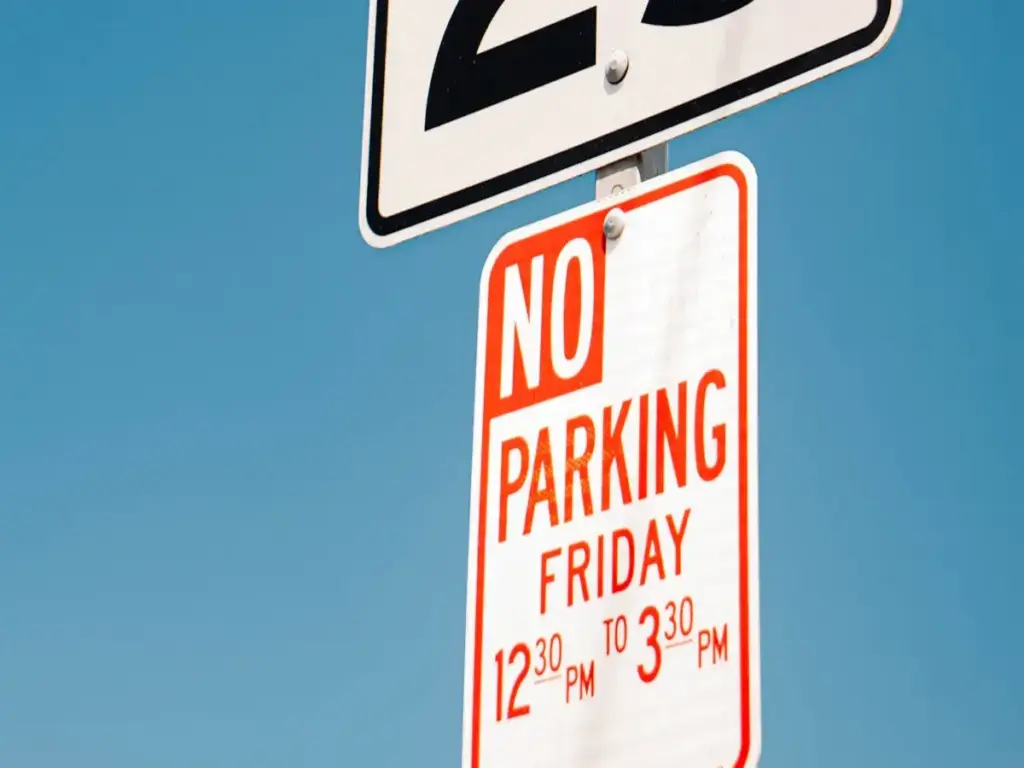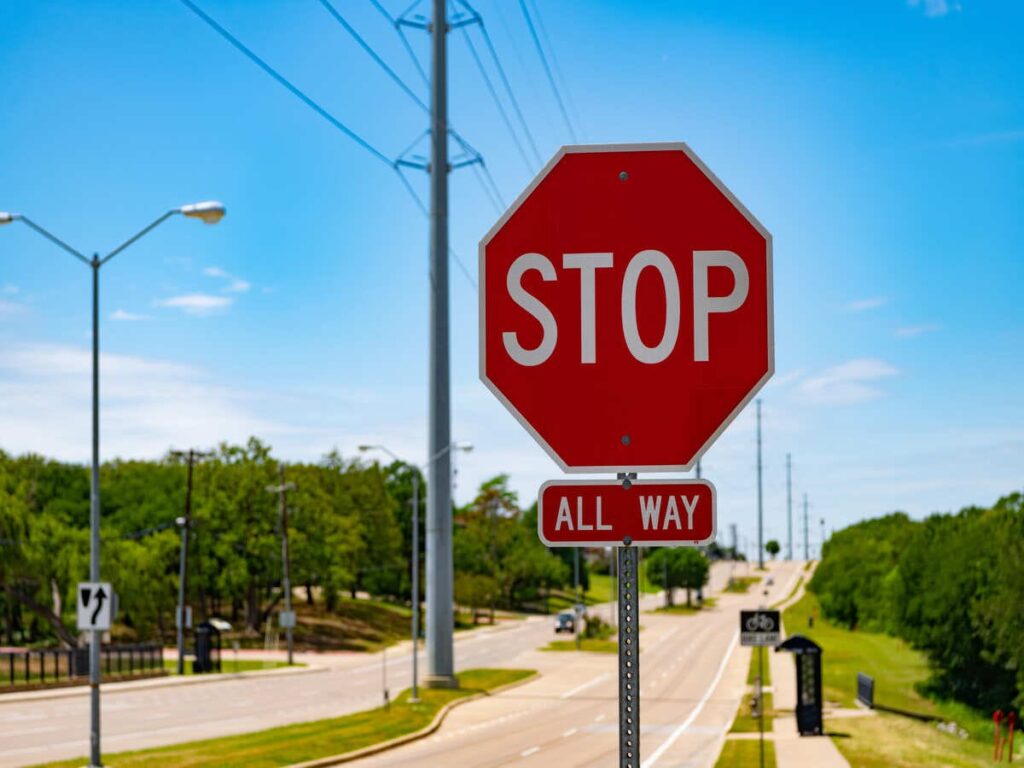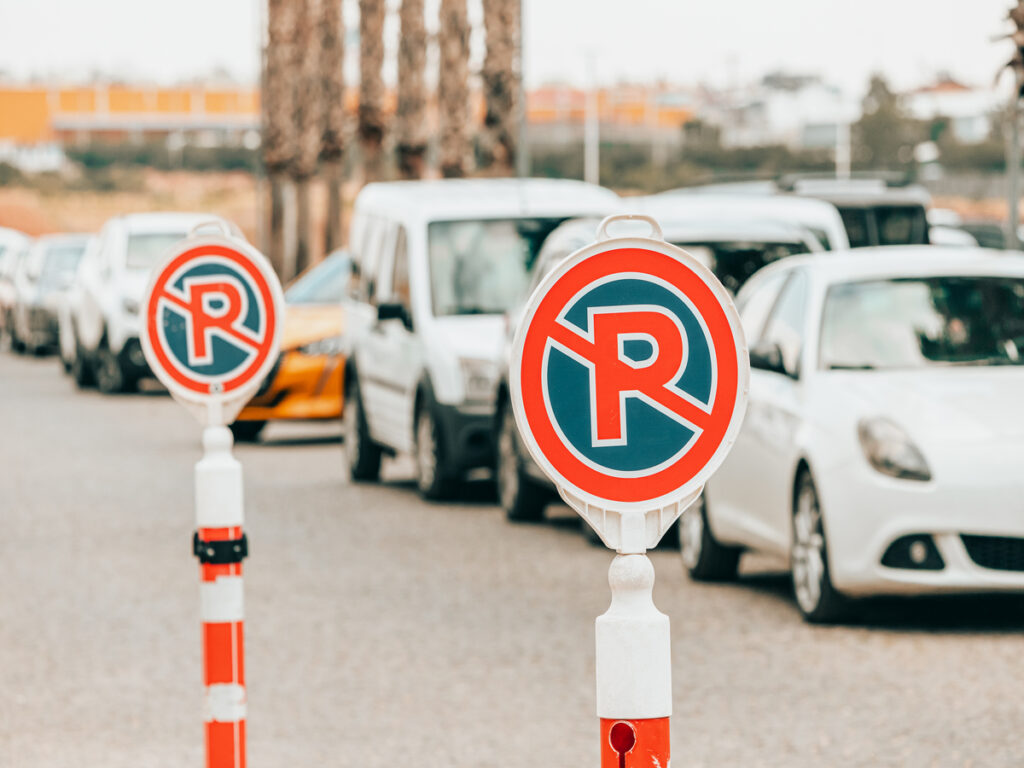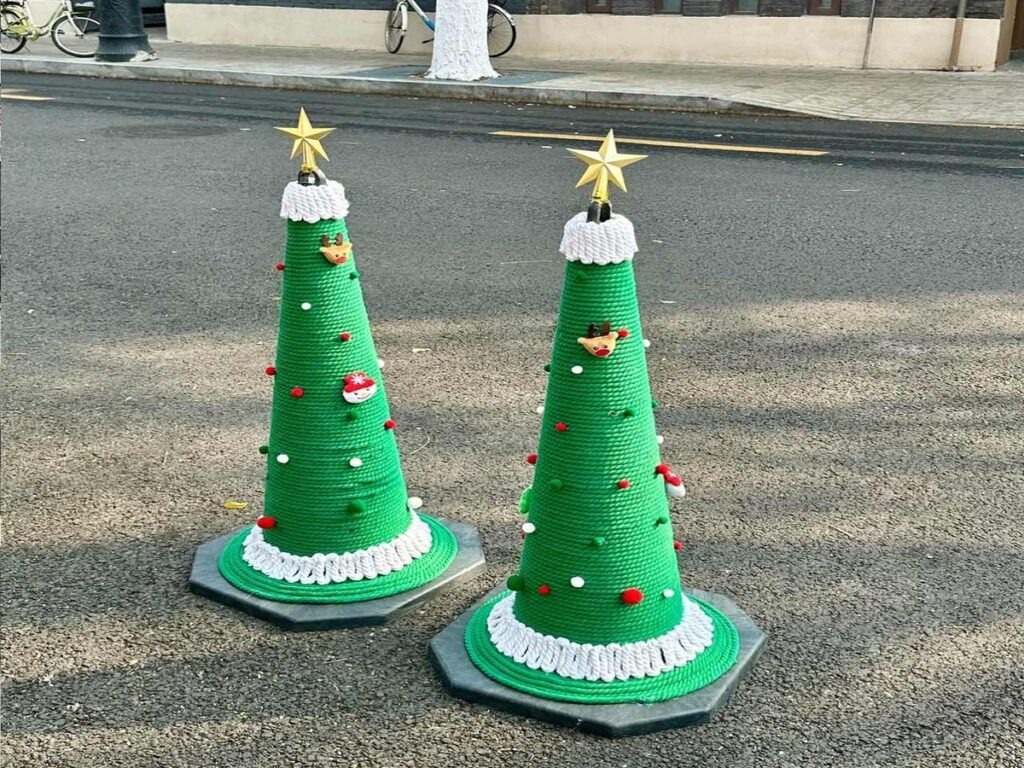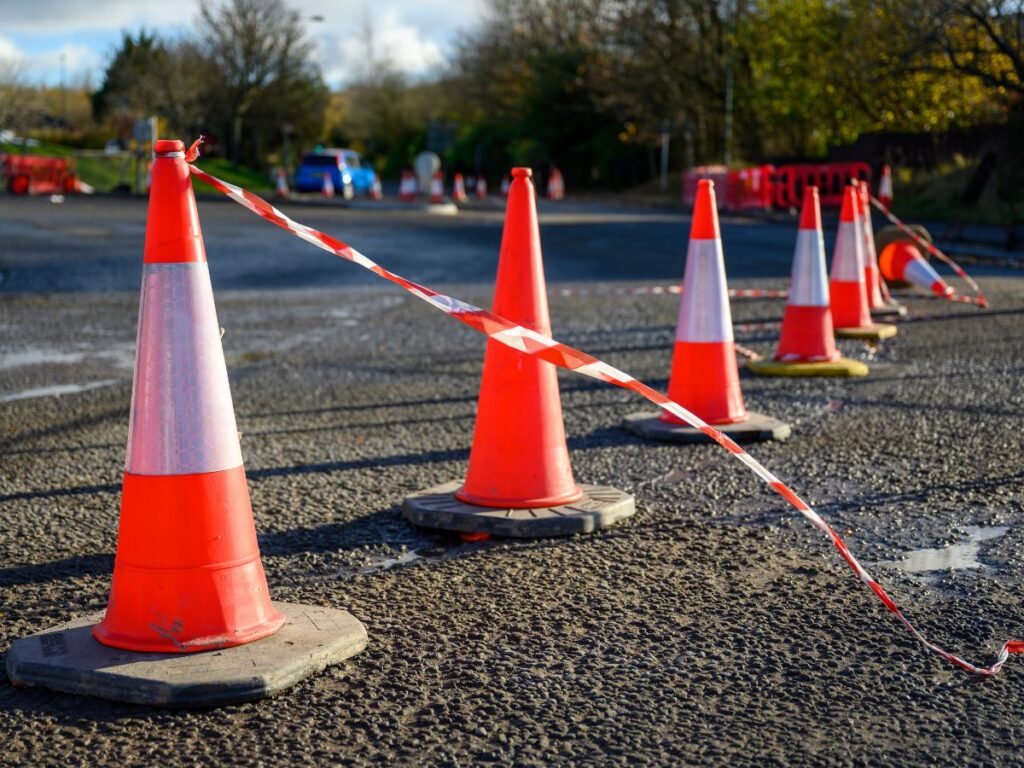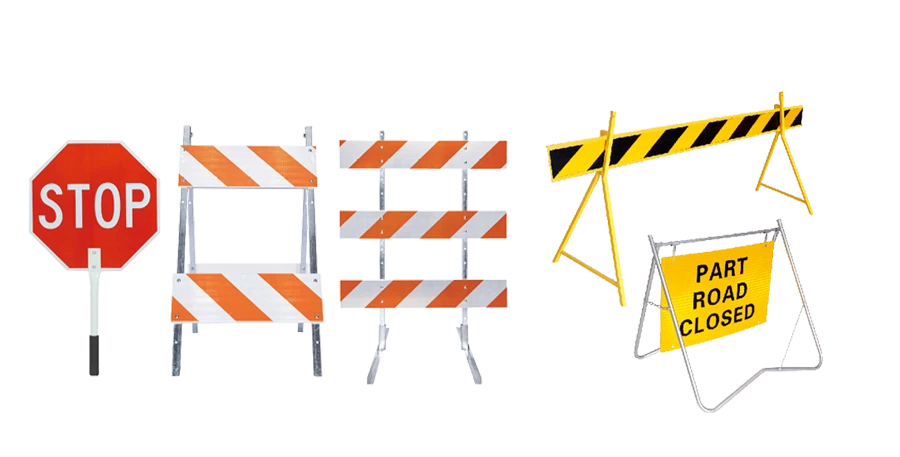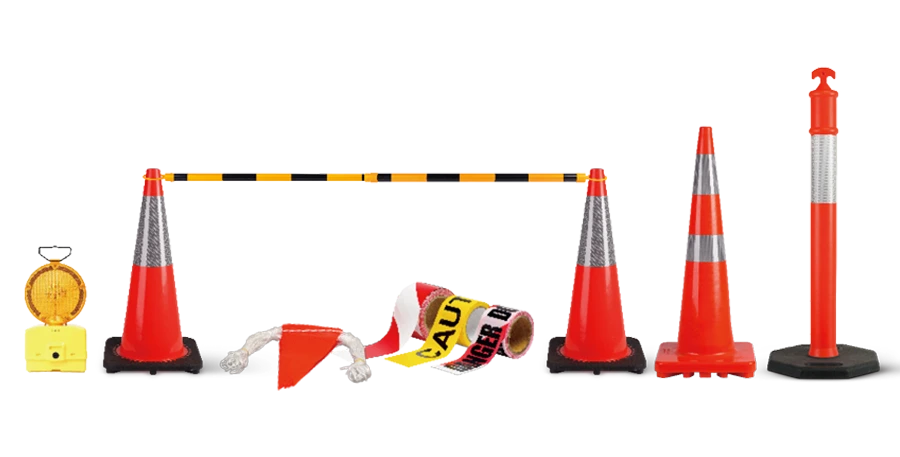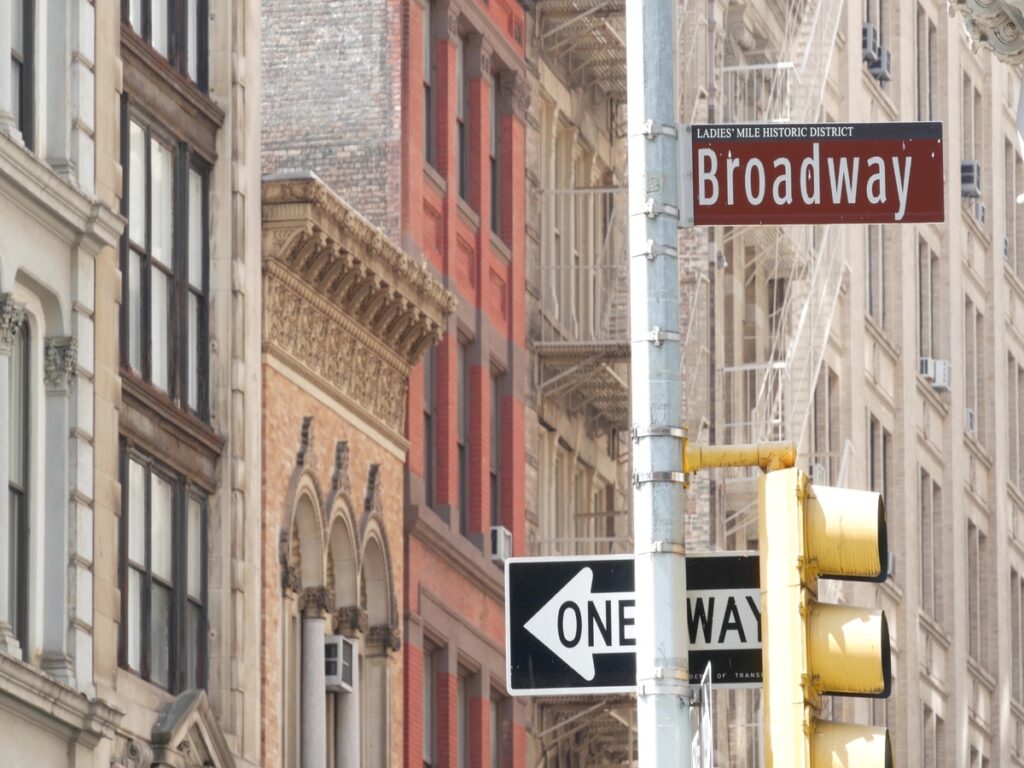
यातायात और सुरक्षा के लिए सड़क का नाम संकेत महत्वपूर्ण हैं. साइन टाइप का चयन करते समय, स्ट्रीट नेम साइन ब्रैकेट का विकल्प भी महत्वपूर्ण है. एक्सट्रूडेड संकेत मोटे और भारी होते हैं, अपने वजन का समर्थन करने और हवा के दबाव का सामना करने के लिए मजबूत कोष्ठक की आवश्यकता होती है. इसके विपरीत, फ्लैट संकेत हल्के होते हैं और उन्हें सरल कोष्ठक के साथ जोड़ा जा सकता है. वैंडल-प्रूफ हार्डवेयर का उपयोग करना संकेतों की सुरक्षा और दीर्घायु को बढ़ाता है, विशेष रूप से व्यस्त क्षेत्रों में.
Optraffic स्ट्रीट नेम साइन ब्रैकेट की एक पूरी श्रृंखला प्रदान करता है एक्सट्रूडेड ब्लेड से मेल खाने के लिए डिज़ाइन किया गया. स्थायित्व और आसान स्थापना के लिए बनाया गया, Optraffic सुरक्षा उत्पाद स्पष्ट सुनिश्चित करने में मदद करते हैं, किसी भी वातावरण में सुरक्षित साइनेज-शांत पड़ोस से लेकर उच्च-ट्रैफिक चौराहों तक.
चाबी छीनना
- फ्लैट स्ट्रीट के संकेत हल्के और सरल हैं. वे शांत स्थानों में या अल्पकालिक उपयोग के लिए अच्छी तरह से काम करते हैं.
- एक्सट्रूडेड सड़क के संकेत भारी और मजबूत होते हैं. वे व्यस्त सड़कों और खराब मौसम के लिए बेहतर हैं.
- साइन के वजन को फिट करने वाले कोष्ठक को चुनें. फ्लैट संकेतों को बुनियादी कोष्ठक की आवश्यकता होती है, लेकिन एक्सट्रूडेड संकेतों को मजबूत लोगों की जरूरत है.
- छेड़छाड़-प्रूफ टूल का उपयोग करने से दोनों प्रकार के संकेत लंबे समय तक रहते हैं और सुरक्षित रहते हैं, विशेष रूप से भीड़ भरे क्षेत्रों में.
- कोष्ठक का चयन करते समय जगह और मौसम के बारे में सोचें. यह संकेत स्थिर रहने और लंबे समय तक चलने में मदद करता है.
फ्लैट स्ट्रीट नाम के संकेत
डिजाइन और सामग्री
फ्लैट स्ट्रीट नाम के संकेत पतले एल्यूमीनियम से बनाए जाते हैं, के बारे में 0.080 इंच मोटा. वे हल्के हैं, उन्हें ले जाने और स्थापित करने के लिए सरल बना दिया. सामग्री मिलती है 2009 म्यूटेक नियम, यह सुनिश्चित करना कि वे दिन और रात की दृश्यता के लिए ठीक से प्रकाश को प्रतिबिंबित करते हैं. तब से 2018, एजेंसियों को उन संकेतों को प्रतिस्थापित करना होगा जो इन मानकों को पूरा नहीं करते हैं. इन नियमों का पालन करने के लिए फ्लैट संकेत एक भरोसेमंद विकल्प हैं.
वजन और ब्रैकेट की जरूरत है
फ्लैट संकेत प्रकाश हैं, इसलिए वे कोष्ठक को ज्यादा तनाव नहीं देते हैं. उदाहरण के लिए, मेट्रो विंग 800 ब्रैकेट, फ्लैट संकेतों के लिए बनाया गया, बस तौलना 1.75 एलबीएस. यह उन जगहों पर अच्छी तरह से काम करता है जहां मजबूत कोष्ठक की आवश्यकता नहीं होती है. आप कैप-माउंट या 2-वे साइन ब्रैकेट जैसे सिंपल हार्डवेयर का उपयोग कर सकते हैं. ये कोष्ठक अतिरिक्त सुदृढीकरण की आवश्यकता के बिना सुरक्षित रूप से संकेतों को पकड़ते हैं.
सामान्य अनुप्रयोग
फ्लैट संकेतों का उपयोग अक्सर पार्कों में किया जाता है, शांत सड़कें, या अस्थायी सेटअप. उनके हल्के वजन और आसान स्थापना उन्हें छोटी परियोजनाओं या सामुदायिक सड़कों के लिए सस्ती बनाते हैं. वे वैंडल-प्रूफ हार्डवेयर के साथ भी काम करते हैं, जो उन्हें उन क्षेत्रों में लंबे समय तक चलने में मदद करता है जहां छेड़छाड़ होती है. यदि आपको एक त्वरित और लचीला साइन समाधान की आवश्यकता है, फ्लैट संकेत एक बढ़िया विकल्प हैं.
एक्सट्रूडेड स्ट्रीट नेम साइन्स
डिजाइन और सामग्री
एक्सट्रूडेड संकेत एक आई-बीम के आकार के मोटे एल्यूमीनियम से बनाए जाते हैं. यह आकार उन्हें झुकने के लिए मजबूत और कठिन बनाता है. ये संकेत फ्लैट वाले की तुलना में कठिन महसूस करते हैं. उनका मजबूत निर्माण बहुत सारे यातायात के साथ व्यस्त सड़कों के लिए बहुत अच्छा है. सामग्री इस प्रकार है म्यूटेक नियम, तो यह दिखाई देता है और लंबे समय तक रहता है.
ये संकेत झुकते या ताना नहीं मारते, दबाव में भी. उनका मजबूत डिजाइन हवा या हिलने जैसे कठिन मौसम को संभालता है. यदि आपको एक संकेत की आवश्यकता है जो कई वर्षों तक रहता है, एक्सट्रूडेड संकेत एक स्मार्ट पिक हैं.
वजन और ब्रैकेट की जरूरत है
एक्सट्रूडेड संकेत फ्लैट वाले की तुलना में भारी होते हैं. उनके वजन का मतलब है कि उन्हें जरूरत है मजबूत कोष्ठक सुरक्षित रहने के लिए. भारी कर्तव्य कोष्ठक, गहरे चैनल या क्लैंप सिस्टम की तरह, सबसे अच्छा काम करना. ये कोष्ठक तूफानों या तेज हवाओं के दौरान संकेतों को स्थिर रखते हैं.
वैंडल-प्रूफ हार्डवेयर का उपयोग करना भी एक्सट्रूडेड संकेतों के लिए एक अच्छा विचार है. यह हार्डवेयर लोगों को छेड़छाड़ करने या संकेतों को चुराने से रोकता है. यह व्यस्त स्थानों में विशेष रूप से सहायक है जहां संकेत अक्सर क्षतिग्रस्त हो जाते हैं.
सामान्य अनुप्रयोग
शहरों में एक्सट्रूडेड संकेतों का उपयोग किया जाता है, राजमार्ग, और व्यस्त चौराहों. वे बहुत सारे यातायात वाले क्षेत्रों के लिए मजबूत और परिपूर्ण हैं. आप उन्हें खराब मौसम वाले स्थानों पर डंडे पर देखेंगे. लंबे समय तक परियोजनाओं के लिए एक्सट्रूडेड संकेत जैसे शहर क्योंकि उन्हें समय के साथ कम फिक्सिंग की आवश्यकता होती है.
यदि आपकी परियोजना एक हवा या भीड़ भरे क्षेत्र में है, एक्सट्रूडेड संकेत सबसे अच्छा विकल्प हैं. उन्हें सुरक्षा और स्थायित्व के लिए मजबूत कोष्ठक और वैंडल-प्रूफ हार्डवेयर के साथ जोड़ी. वे दृश्यमान रहते हैं और कठिन परिस्थितियों को अच्छी तरह से संभालते हैं.
ब्रैकेट शक्ति आवश्यकताओं की तुलना करना
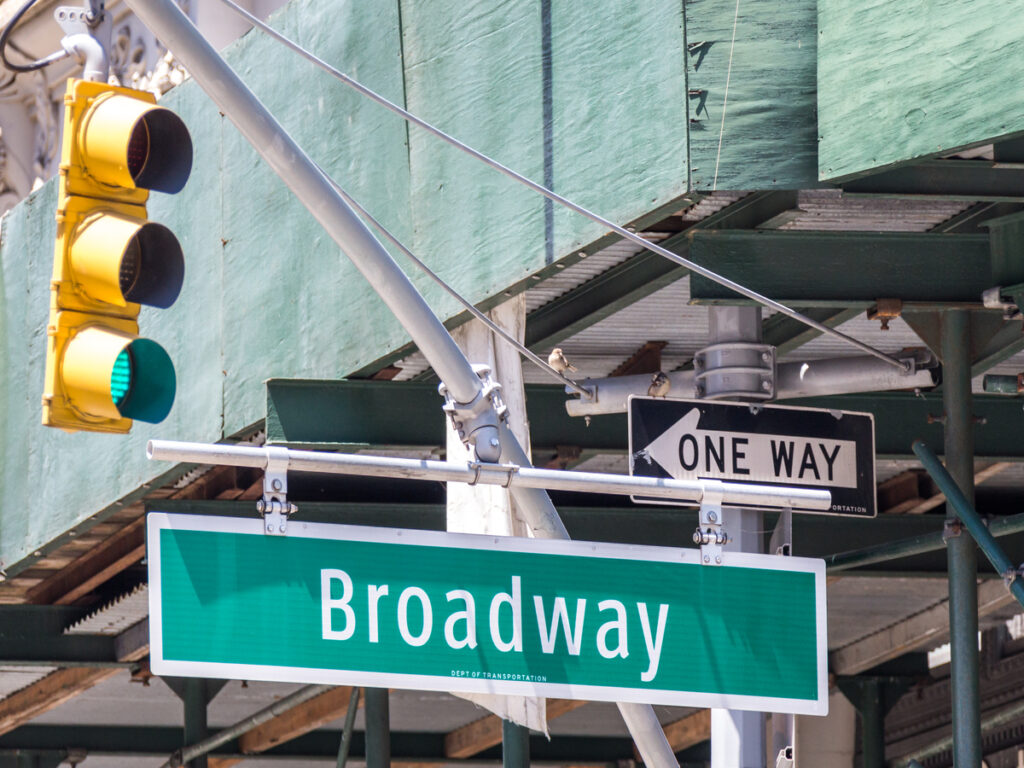
वजन और कठोरता अंतर
संकेतों का वजन और कठोरता ब्रैकेट पसंद को प्रभावित करती है. फ्लैट संकेत हल्के और बेंडेबल हैं. उनका पतला एल्यूमीनियम उन्हें स्थापित करने में आसान बनाता है. सरल कोष्ठक उन्हें बहुत अधिक प्रयास के बिना पकड़ सकते हैं.
एक्सट्रूडेड संकेत भारी और मजबूत होते हैं. उनका मोटा एल्यूमीनियम निर्माण वजन और ताकत दोनों को जोड़ता है. इस अतिरिक्त वजन के लिए उचित समर्थन के लिए मजबूत सड़क नाम साइन ब्रैकेट की आवश्यकता होती है. वे झुकने का विरोध करते हैं, उन्हें दीर्घकालिक बाहरी उपयोग के लिए आदर्श बनाना.
हमेशा स्ट्रीट नाम साइन ब्रैकेट चुनें जो साइन के वजन और कठोरता से मेल खाते हैं. यह साइन को सुरक्षित रखता है और समय के साथ अच्छी तरह से काम करता है.
पवन प्रतिरोध और पर्यावरणीय कारक
हवा यह भी प्रभावित कर सकती है कि कोष्ठक कैसे प्रदर्शन करते हैं. फ्लैट संकेत छोटे हैं, इसलिए हवा उन्हें ज्यादा धक्का नहीं देती है. शांत क्षेत्रों में, बुनियादी कोष्ठक ठीक काम करते हैं. लेकिन हवा में जगहों पर, उन्हें अतिरिक्त समर्थन की आवश्यकता हो सकती है.
एक्सट्रूडेड संकेत बड़े होते हैं और अधिक हवा को पकड़ते हैं. तेज हवाएं अपने कोष्ठक को तनाव दे सकती हैं. उन्हें स्थिर रखने के लिए भारी-शुल्क कोष्ठक की आवश्यकता होती है. ये कोष्ठक तूफानों के दौरान संकेतों को आगे बढ़ने से रोकते हैं.
बारिश की तरह मौसम, बर्फ, और हिलाना भी मायने रखता है. छेड़छाड़-प्रूफ हार्डवेयर के साथ एक्सट्रूडेड संकेत कठिन मौसम को बेहतर तरीके से संभालते हैं. वे कठोर परिस्थितियों में मजबूत और सुरक्षित रहते हैं.
स्थायित्व और दीर्घकालिक प्रदर्शन
साइन ब्रैकेट उठाते समय स्थायित्व महत्वपूर्ण है. फ्लैट संकेत अल्पकालिक या शांत क्षेत्रों के लिए अच्छे हैं. वे हल्के और बदलने में आसान हैं. लेकिन वे व्यस्त या बुरे मौसम के स्थानों में नहीं रह सकते हैं.
एक्सट्रूडेड संकेत लंबे समय तक बनाए जाते हैं. उनके मजबूत निर्माण और मजबूत कोष्ठक उन्हें वर्षों तक जगह में रखते हैं. वे आसानी से नहीं पहनते हैं, उन्हें राजमार्गों और व्यस्त सड़कों के लिए महान बनाना. छेड़छाड़ करने वाले हार्डवेयर को जोड़ना उन्हें नुकसान से सुरक्षित रखता है.
लंबे समय तक चलने वाले विकल्प के लिए, स्ट्रॉन्ग स्ट्रीट नेम साइन ब्रैकेट के साथ एक्सट्रूडेड साइन्स चुनें. वे विश्वसनीय और सख्त रहते हैं, यहां तक कि कठिन परिस्थितियों में.
सही सड़क का नाम साइन ब्रैकेट चुनना
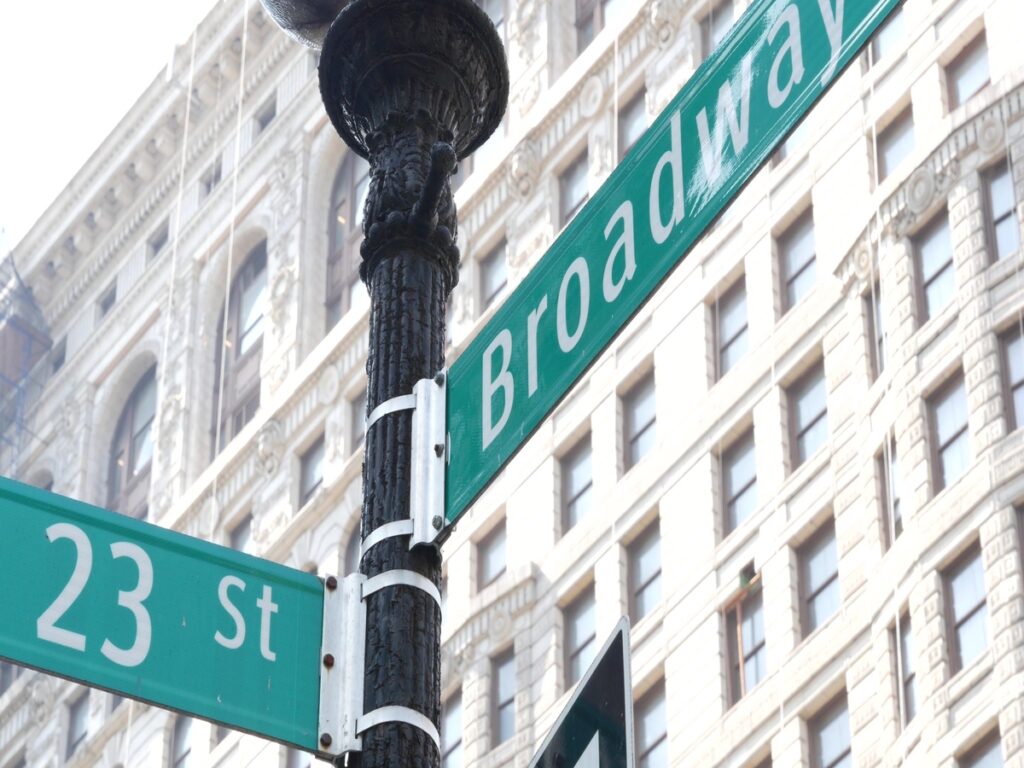
फ्लैट संकेतों के लिए कोष्ठक
फ्लैट संकेतों को हल्के कोष्ठक की आवश्यकता होती है जो उपयोग करने के लिए सरल हैं. ये कोष्ठक थोड़ी हवा या यातायात वाले स्थानों में सबसे अच्छा काम करते हैं. कैप-माउंट या 2-वे कोष्ठक फ्लैट संकेतों के लिए अच्छे विकल्प हैं. वे अतिरिक्त वजन जोड़ने के बिना सुरक्षित रूप से संकेतों को पकड़ते हैं.
जब स्ट्रीट नाम के लिए स्ट्रीट नाम साइन ब्रैकेट, इसे सरल रखें. हल्के कोष्ठक को स्थापित करना आसान होता है और स्ट्रेन डंडे नहीं होते हैं. यदि आपको अधिक स्थिरता की आवश्यकता है, Spacers संकेत को स्थिर रखने में मदद कर सकते हैं. यह सेटअप सुनिश्चित करता है कि साइन सीधा और देखने में आसान रहे.
फ्लैट संकेत पार्कों के लिए बहुत अच्छे हैं, छोटी सड़कें, या अल्पकालिक परियोजनाएं. छेड़छाड़ को रोकने के लिए वैंडल-प्रूफ हार्डवेयर का उपयोग करें. यह आपके संकेतों को सुरक्षित रखता है और लंबे समय तक अच्छी तरह से काम करता है.
एक्सट्रूडेड संकेतों के लिए कोष्ठक
एक्सट्रूडेड संकेतों को अपने वजन और आकार को पकड़ने के लिए मजबूत कोष्ठक की आवश्यकता होती है. ये कोष्ठक भारी संकेत और कठिन मौसम को संभालने के लिए बनाए जाते हैं. डीप चैनल ब्रैकेट या क्लैंप सिस्टम सबसे अच्छे विकल्प हैं. वे कसकर पकड़ते हैं और चिन्ह को तेज हवाओं में जाने से रोकते हैं.
एक्सट्रूडेड संकेतों के लिए टिकाऊ कोष्ठक चुनें. मजबूत कोष्ठक खराब मौसम में भी संकेत को स्थिर रखते हैं. वैंडल-प्रूफ हार्डवेयर जोड़ने से अतिरिक्त सुरक्षा मिलती है. यह चोरी या क्षति को रोकता है, खासकर व्यस्त इलाकों में.
शहरों में एक्सट्रूडेड संकेतों का उपयोग किया जाता है, राजमार्ग, और व्यस्त चौराहों. उनका कठिन डिजाइन मजबूत कोष्ठक के साथ अच्छा काम करता है. यह जोड़ी लंबे समय तक चिन्हों को सुनिश्चित करती है और कम फिक्सिंग की आवश्यकता होती है.
विचार करने के लिए कारक: जगह, मौसम, और बजट
जहां आप कोष्ठक का चयन करते समय अपने साइन मामलों को रखते हैं. शांत क्षेत्रों में, हल्के कोष्ठक पर्याप्त हैं. हवा या व्यस्त स्थानों में, मजबूत कोष्ठक एक जरूरी हैं. मौसम के बारे में सोचें और यह आपके संकेत को कैसे प्रभावित कर सकता है.
बारिश, बर्फ, और हवा प्रभावित कर सकती है कि कोष्ठक कैसे काम करते हैं. इन स्थितियों को संभालने वाले कोष्ठक को चुनें. एक्सट्रूडेड संकेतों के लिए, एंटी-वाइब्रेशन सुविधाओं के साथ कोष्ठक का उपयोग करें. यह तूफानों के दौरान चिन्ह को स्थिर रखता है.
बजट भी महत्वपूर्ण है. सरल कोष्ठक के साथ फ्लैट संकेत छोटी परियोजनाओं के लिए सस्ते हैं. मजबूत कोष्ठक के साथ extruded संकेत अधिक लागत लेकिन लंबे समय तक चलते हैं. तय करें कि आपको क्या चाहिए और हार्डवेयर चुनें जो आपके बजट और गुणवत्ता की जरूरतों को पूरा करता है.
बख्शीश: हमेशा ब्रैकेट को साइन के वजन और आकार से मिलान करें. यह उचित सेटअप के साथ मदद करता है और क्षति से बचता है.
निकला हुआ सड़क के नाम के संकेत भारी हैं, इसलिए उन्हें मजबूत स्ट्रीट नाम साइन ब्रैकेट की जरूरत है. उनका कठिन डिजाइन उन्हें व्यस्त सड़कों और खराब मौसम के लिए एकदम सही बनाता है. समतल संकेत बहुत हल्के होते हैं और सरल कोष्ठक का उपयोग कर सकते हैं. फिर भी, यहां तक कि फ्लैट संकेतों को जगह में रहने के लिए सही हार्डवेयर की आवश्यकता होती है.
सीखना चाहते हैं कि कौन से ब्रैकेट फ्लैट या एक्सट्रूडेड संकेतों के लिए सबसे अच्छा काम करते हैं? हमारे ब्लॉग पढ़ें: सड़क का नाम साइन ब्रैकेट: शीर्ष प्रकार और सबसे अच्छा उपयोग करता है ब्रैकेट शैलियों के एक स्पष्ट टूटने के लिए और सही एक का चयन कैसे करें.
अक्सर पूछे जाने वाले प्रश्न
क्या फ्लैट और एक्सट्रूडेड स्ट्रीट नाम के संकेत अलग -अलग बनाता है?
सपाट संकेत पतले और हल्के होते हैं, उन्हें उपयोग करने में आसान बनाना. एक्सट्रूडेड संकेत मोटे होते हैं, भारी, और मजबूत. सपाट संकेत शांत या अस्थायी स्पॉट के लिए सबसे अच्छे हैं. एक्सट्रूडेड संकेत व्यस्त सड़कों पर और खराब मौसम में अच्छी तरह से काम करते हैं क्योंकि वे कठिन हैं.
क्यों extruded संकेतों को मजबूत धारकों की आवश्यकता होती है?
एक्सट्रूडेड संकेत फ्लैट वाले से भारी और बड़े होते हैं. उनका आकार अधिक हवा को पकड़ता है, धारकों पर तनाव डालना. मजबूत धारक इन संकेतों को किसी न किसी स्थितियों में स्थिर और सुरक्षित रखते हैं.
क्या फ्लैट संकेत एक ही धारकों का उपयोग एक्सट्रूडेड संकेतों के रूप में कर सकते हैं?
फ्लैट संकेतों को कैप-माउंट या 2-वे प्रकार जैसे सरल धारकों की आवश्यकता होती है. Extruded संकेतों को मजबूत धारकों की आवश्यकता है, गहरे चैनल या क्लैंप सिस्टम की तरह. सही धारक का उपयोग साइन को सुरक्षित रखता है और अच्छी तरह से काम करता है.
मैं अपने प्रोजेक्ट के लिए सबसे अच्छा साइन होल्डर कैसे चुनूं?
साइन टाइप के बारे में सोचें, जगह, और मौसम. फ्लैट संकेतों को शांत स्थानों के लिए हल्के धारकों की आवश्यकता होती है. घुमावदार या व्यस्त क्षेत्रों के लिए extruded संकेतों को मजबूत धारकों की आवश्यकता होती है. हमेशा धारक को साइन के वजन और आकार से मिलान करें.
क्या मुझे सभी संकेतों के लिए वैंडल-प्रूफ धारकों का उपयोग करना चाहिए?
वैंडल-प्रूफ होल्डर्स दोनों साइन प्रकारों के लिए एक अच्छा विचार है. वे चोरी या क्षति को रोकते हैं, विशेष रूप से उन क्षेत्रों में जहां छेड़छाड़ होती है. यह संकेत सुरक्षित और लंबे समय तक स्थायी रखता है.

